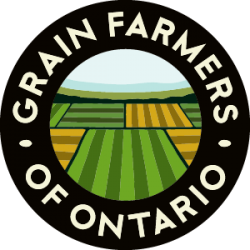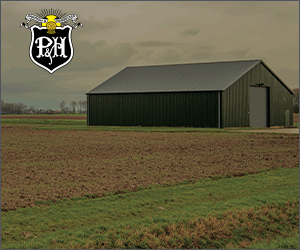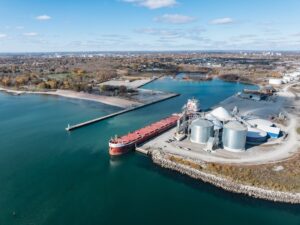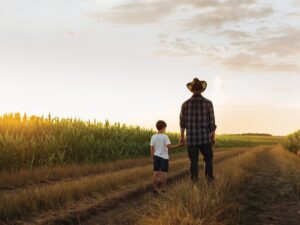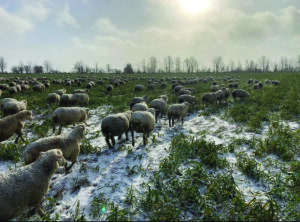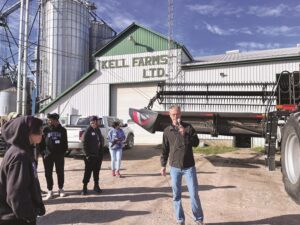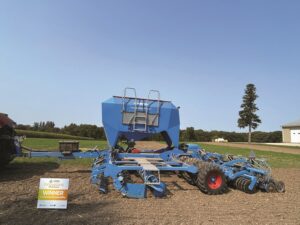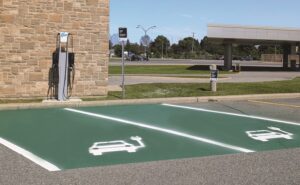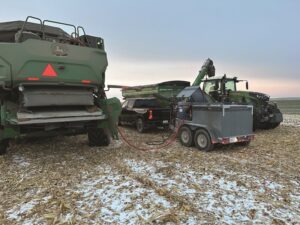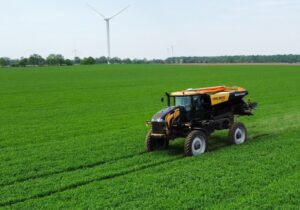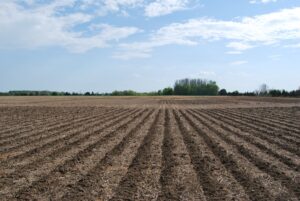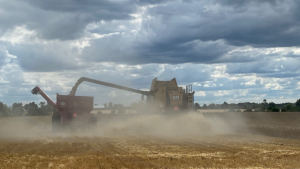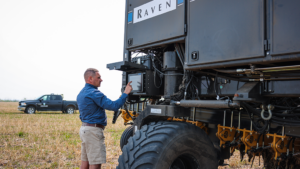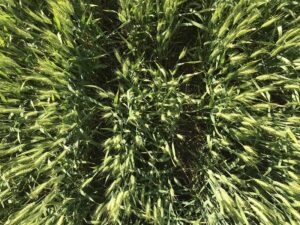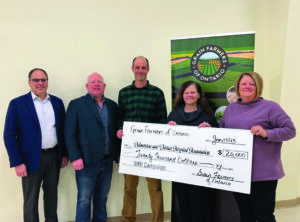Why land prices rise
The impact of competition and shrinking supply
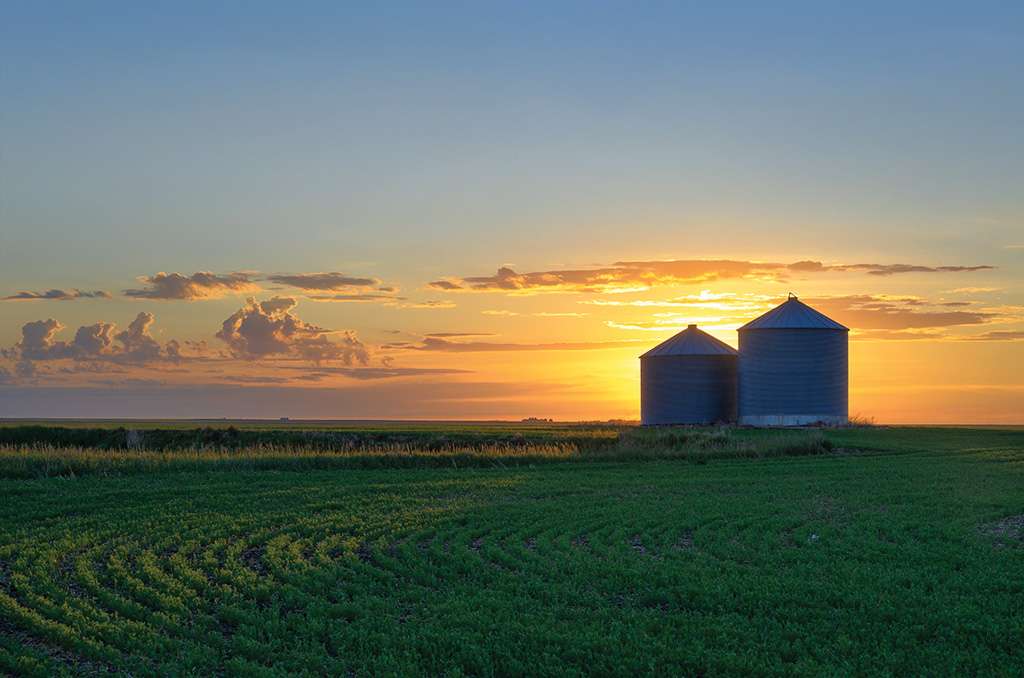
Ontario farmland values have risen dramatically in recent years. According to analysts Ryan Parker and Drew Crinklaw, per acre price trends result from a combination of factors—but while commodity prices, interest rates and competition within the farming community remain key drivers, other more complex pressures are also at play.
SNAPSHOT OF FARMLAND VALUES
Parker, a London-area cow-calf farmer and real estate appraiser with Valco Consultants, produces an annual farmland values report covering 11 counties in southwestern Ontario: Huron, Perth, Oxford, Middlesex, Lambton, Chatham-Kent, Essex, Bruce, Grey, and Wellington. The report includes farmland not containing infrastructure, other above- ground improvements, or land likely to be considered for immediate urban or industrial development. At the 2025 Southwest Agriculture Conference, data from the preliminary 2024 report (since released publicly) was discussed.
In 2010, the mean per-acre value of all 11 counties was under $6,000. In 2024, Parker says that number has risen to “just a hair under $26,000.” The latter number may seem low for those operating in high-quality soils and dairy-heavy regions, but for other areas, $26,000 per acre is a very high value. Variation between each county, and even within the counties themselves, is significant. Perth and Oxford took the top spots—something Parker says each has done for decades—at around
$36,000 and $37,000 per acre. Essex and Bruce took the bottom spots at around $19,000. More interestingly, Parker notes we now “live in a world, somehow, where Grey County’s land values are higher than Bruce, Essex, and Kent.”
Put into percentages, recent years have brought a return to value increases between 20 and 30 per cent across the 11 counties. This number had been previously seen between 2010 and 2013 before shrinking to between two and 10 per cent—a trend which held until 2020. Increases between 20 and 30 per cent returned for 2021 and 2022, but little to no increase was observed between 2023 and 2024. Parker considers this surprising, given “the economic realities of last year.”
Looking ahead, Parker says variability will feature prominently in 2025, with different areas within some counties likely to see well over a $15,000 per acre price spread—an indicator that markets are diverging. He also predicts continued growth in some areas, with comparative drops in value in others. At times, this disparity will be visible between farms sold in relatively close proximity. More financially- stressed sales are also predicted.
WHAT’S DRIVING PRICES?
Variations in commodity prices and interest rates correlate strongly with changes in farmland values. This is a constant, says Parker, given the impact they have on profitability and the ability of businesses to successfully grow. Lower land value growth between 2013 and 2020, for example, matches well with the higher interest and commodities prices of the time. Then, says Parker, “Covid hits. Interest rates plummet again, crop prices go through the roof in 2021, and what do you know, we go way up again, another 20-30 per cent average increase per year.”
Livestock density is also a consistent driver.
“There are as many dairy farms in Kent and Essex as there is on a couple of concessions in parts of Perth and Oxford,” Parker says, adding other types of livestock both in and outside supply managed systems also contribute. He goes on to say livestock-heavy areas “shine” when commodity prices are low since the value floor is much higher.
Livestock density is also a driver separating southwestern Ontario’s 2010 to 2024 farmland value change rate—12 per cent—compared to 5.7 per cent experienced in the American corn belt over the same period, for example.
Migration northwards is another reason values have notably increased in places like Grey County and the northern clay belt—the latter not being included in Parker’s analysis. He says there has not “been a big desire to turn the compass south,” even though farmers selling in higher-value areas would gain a good dollar-for-land value, plus additional heat units.
URBANIZATION REDUCING THE LAND SUPPLY
The elephant in the room, however, is the loss of farmland to development.
“There is a certain pressure always on our land values, especially when we get closer to the central part of the province…a bubble around those urban centres that are always going to be there,” Parker says. “And we’ve got new things—the Volkswagen plant, the purchase in Wilmot outside Waterloo—we’ve got a lot of things moving and taking up more ground and more space, and that all means there’s less supply for farmers to buy farms.”
Crinklaw, policy advisor with the Ontario Ministry of Agriculture, Food, and Agribusiness, says the near proximity of urban areas makes the correlation between farmland values and better soils harder to see. Development appears to trump commodity prices and interest rates, too. He reiterates the amount of farmland in Ontario is more-or-less fixed, while the number of buyers is expanding. In this environment, Crinklaw says even small increases in demand result in higher land prices.
People moving from cities to properties in smaller towns and rural areas is one pool of buyers. Even if they’re not buying farmland per se, domestic mobility and a growing population generally necessitate expansions in housing, as well as all the infrastructure needed to build and support growth. This, again, often reduces the amount of farmland available for farmers to purchase from each other.
“Demand seems to be somewhat insatiable,” says Crinklaw. “Not everywhere, but certainly parts of Ontario are getting crowded.”
“In farming, the land is the business. Farming requires stable, long- term access to land. Without it, scaling can be a challenge…If you’re serious about establishing a long-term farm operation, planning for a secure land base must be a priority.”
With this in mind, Crinklaw encourages farmers to pay attention to local planning and municipal Land Needs Assessments. This can provide a good picture of what the land market in a given area will look like as affected by development. Being aware of land use planning is even more important as local authorities now have the ability to submit requests for settlement area expansion to the province at any time—something which used to happen at intervals of five or ten years.
“You don’t need to be intimately involved in your local council meetings or minutes, but having an understanding of what major exercises are happening in your neighbourhood is going to help inform your potential decisions in the future,” says Crinklaw, later reiterating changes to Land Needs Assessments may mean “someone’s need is for your land.”
OTHER TRENDS
Parker highlights investor groups as another pool of buyers, though one which tends to be active in specific areas. From what Parker is “hearing through the grapevine,” he suspects investor groups will be more active in 2025 compared to 2024. Local contractors and investors, rather than large investment firms, are yet another pool—but again, they have largely localized influence on land values. Somewhere around 90 per cent of all farmland purchases are still made by farmers themselves, although such farmers are increasingly likely to already hold a lot of land.
“The small property—that 50 acres with 20 workable—that used to be available to the small cash cropper, the small dairy, almost became totally unavailable because it became so expensive,” says Parker. “By and large, the land game is [those] with significant amounts of land holdings that can use that equity. We always say equity. They’re using that existing cash flow to cash flow that thing for the next 25 years, to make the payments by buying that next piece.”
Crinklaw adds, “quality still matters.” Despite the noise, farmland value is driven primarily by expectations of the future earning power of the land. He sees more farmers “doing more with what they have,” whether through land improvements such as better tile drainage—the resultant increase in crop returns from doing so being a better income- to-cost ratio than purchasing more land—or finding multifunctionality uses through agritourism, environmental goods and services, energy production, and other means of investing in what he calls “agriculture- plus” business models.
Read Valco’s 2024 Southwestern Ontario Land Values report. •

